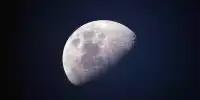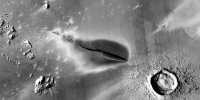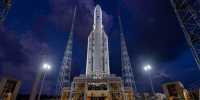Four decades after their discovery, we finally realize what Jupiter’s spectacular X-rays are strengthening the aurora. This light show is bright, short, and regular every few minutes. And yet, they give up hundreds of gigawatts of energy, enough to power our entire civilization for a few moments. Now, for the first time, astronomers have seen what happened on this light show. According to a new study published in Science Advances, auroras are caused by periodic vibrations of Jupiter’s magnetic field line. The vibrations change the magnetic field to create plasma waves around the giant planet.
The ions in this plasma originate from the eruption of Jupiter’s volcanic moon Iowa and are mostly sulfur and oxygen. Waves crash into the Jovian atmosphere and transmit this material, expressing energy. Co-lead author Dr William Dunn from UCL Mullard Space Science Laboratory said in a statement, “We’ve seen Jupiter produce X-ray aurora for four decades, but we didn’t know how it happened. We only knew that they were produced when the ions in the planets’ atmosphere crashed.”
“Now we know that these ions were transported by plasma waves – an explanation that has not been proposed before, although such a process produces the Earth’s own aurora. Thus, it could be a cosmic phenomenon that may be present in different atmospheres. To find out, they used data from NASA’s Juno mission, which carried out the latest research on Jupiter, measured changes in the magnetic field, and the European Space Agency’s XMM-Newton, which measured X-rays emitted from Earth’s orbit.
The waves are known as electromagnetic ion cyclotron (EMIC) waves, similar to Earth’s Aurora although much less powerful than our own. This suggests that this may be a common phenomenon in the universe. “Now that we have identified this basic process, there is a wealth of possibilities where it can be further explored. Dr. Zhanggua Yao, the co-author of the Chinese Academy of Sciences, adds that Saturn, Uranus, Neptune, and possibly different types of charged particles ‘surfing’ the waves.
The study is based on 26-hour observations between July 16 and 17, 2017. This time Jupiter explodes on X-rays every 27 minutes. It is not clear what caused the magnetic field to vibrate. Solar wind may be a possible cause. Temperature differences may also play a role. The team suggests that other plasma effects may also play a role. Although an important mechanism has been discovered, the full picture of Jupiter’s incredible aurora has not yet been found.













